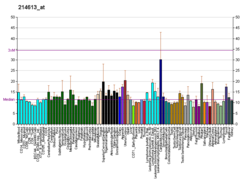Brown adipose tissue Activation
Brown adipose tissue (BAT), in contrast to bona fide white fat, can dissipate significant amounts of chemical energy through uncoupled respiration and heat production (thermogenesis). Metabolic substrates are consumed to fuel mitochondrial futile cycles and uncoupling protein 1 (UCP1)-dependent respiration to ultimately convert chemical energy to heat. Gs-signaling stimulates the recruitment of thermogenically competent beige adipocytes in the subcutaneous adipose depots.
Exposure to environmental cold stimulates thermogenic catabolism of lipids and carbohydrates in brown adipose tissue (BAT).
BAT activation is predominantly ascribed to the Gs-coupled family, which signals through increased cyclic AMP (cAMP). This class is exemplified by the β-adrenergic receptors (ADRB1, ADRB2, and ADRB3), which represent the canonical means of sympathetic, ligand-mediated thermogenic control.
However, in the case of Gpr3, cold exposure increases the expression of this constitutively active receptor, which possesses innate signaling capacity and, thus, can modulate cAMP levels and thermogenic output without a ligand. [16]
Gpr3 expression must be kept at extremely low basal levels until there is a thermogenic demand. Mimicking the cold induction of Gpr3 is then sufficient to drive and maintain elevated BAT activity even under conditions of little or no sympathetic tone.
To prove this, OS Johansen and colleagues developed a conditional gain-of-function model (Gpr3 TTG) for robust and sustained genetic manipulation of Gpr3 in vitro and in vivo.
Gpr3 TTG mice were crossed with mice to facilitate overexpression of Gpr3 in isolated primary brown and subcutaneous white adipocytes. Gpr3 overexpression significantly increased the expression of thermogenic genes, fatty acid uptake, and basal and leak mitochondrial respiration.
Gpr3 overexpression in their primary adipocyte model suppressed expression of the β-adrenergic receptors, further supporting a counter-regulatory interaction between GPR3 and other Gs-coupled receptors.
BAT-specific overexpression of Gpr3 (C-3BO) mice were completely protected from developing diet-induced obesity despite maintaining comparable levels of food intake, C-3BO mice maintained elevated whole-body energy expenditure as well as darker brown BAT depots and higher thermogenic gene expression. [16]
Brain cells
GPR3 mRNA is broadly expressed in neurons in various brain regions, including the cortex, thalamus, hypothalamus, amygdala, hippocampus, pituitary, and cerebellum. Notably, the GPR3 protein is overexpressed in neurons in post-mortem brain tissue sections from individuals afflicted by Alzheimer's disease. [7] In a study on mice with Alzheimer's disease, it was shown that the disruption of the expression of GPR3 has affected the overgrowth of amyloid plaque on neurons, helping symptoms of Alzheimer's disease. [18]
In the medial habenula, GPR3 is expressed in cells which have nicotinic acetylcholine receptors (nAChR) and has been studied for a potential role in regulating nicotine consumption in a mouse model. [19]




